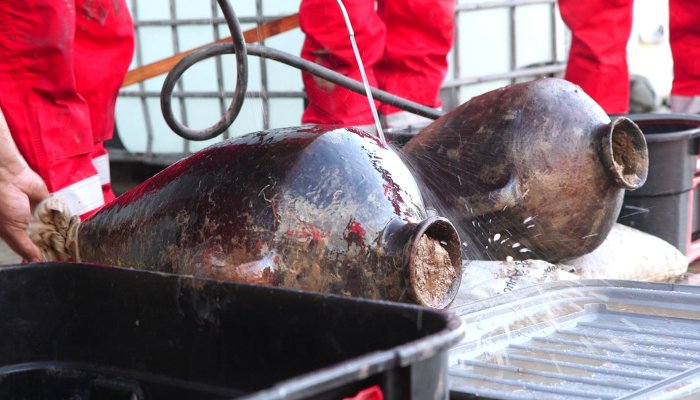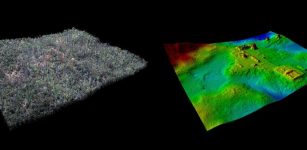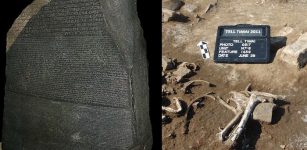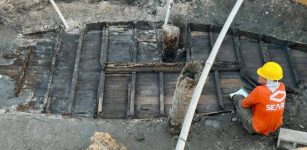Ground-Breaking Discovery: A 3,300-Year-Old Deep-Sea Canaanite Shipwreck Found
Conny Waters - AncientPages.com - A 3, 300-year-old shipwreck with intact amphorae was found 90 km offshore at 1. 8 km depth in the Mediterranean Sea.
Image credit: Israel Antiquities Authority
Energean, a natural gas company operating offshore fields near Israel, discovered the cargo during a routine survey. The Israel Antiquities Authority identified the contents as Late Bronze Age Canaanite storage vessels.
Jacob Sharvit, Head of the Israel Antiquities Authority Marine Unit, states: "The ship likely sank due to a crisis – storm or piracy. It's the first and oldest ship found in the deep Eastern Mediterranean, 90km offshore. This discovery is world-class and history-changing."
The researcher stated that this discovery showcases ancient mariners' advanced navigational skills, enabling them to cross the Mediterranean Sea without coastal references. From this location, only the horizon is visible. They likely navigated using celestial bodies, measuring angles of the sun and stars.
According to Dr. Karnit Bahartan, Head of the Environmental Staff at Energean, the team conducts surveys to discover and extract deep-sea natural gas, using an advanced submersible robot to examine the seafloor."
Image credit: Israel Antiquities Authority
A year ago, our survey revealed an unusual pile of jugs on the seafloor. We contacted the Israel Antiquities Authority, who confirmed it was an exceptional discovery, surpassing our expectations, Dr. Bahartan commented.
Given the discovery's significance, Energean collaborated with Israel Antiquities Authority experts, using their "Energean Star" deep-sea vessel to closely investigate the boat.
Technicians devised a complex plan and custom tool to safely extract artifacts without damaging the assemblage.
Image credit: Israel Antiquities Authority
And as Sharvit explained, "the robot's survey revealed a sunken ship, 12-14 meters long, carrying hundreds of vessels. Some are visible above the seafloor, while others and the ship's wooden beams are buried in the muddy bottom."
During two days at sea, the Energean team removed two vessels from opposite ends of the ship, minimizing disruption to the intact boat and its cargo.
"This vessel type was designed to efficiently transport cheap, mass-produced goods like oil, wine, and fruit. The large quantity of amphorae found on one ship indicates strong commercial ties between their origin and ancient Near Eastern Mediterranean coasts," added Sharvit.
This discovery is extraordinary. Only two other Late Bronze Age shipwrecks with cargo have been found in the Mediterranean – the boat from Cape Gelidonya and the Uluburun boat - both near the Turkish coast and accessible by normal diving. Previously, scholars assumed ancient trade, at that time, was executed by safely flitting from port to port, hugging the coastline within eye contact.
Image credit: Israel Antiquities Authority
This new find, far from any shoreline, revolutionizes our understanding of ancient seafaring abilities.
According to Sharvit, this shipwreck offers exceptional research opportunities. Its extreme depth has preserved it undisturbed since the disaster, protected from human interference and the erosive effects of waves and currents that impact shipwrecks in shallower waters.
According to Eli Escusido, Israel Antiquities Authority Director, these significant Canaanite finds will be exhibited to share the boat's story with the public during 'sample taste' tours of the Archaeological Campus this summer."
Energean Israel CEO Shaul Zemach explained the company's decision to extract archaeological artifacts from the ocean floo, saying: "Our partnership with the Israel Antiquities Authority reflects Energean's commitment to community and environment. Our team's professionalism in this complex project contributed to a significant discovery."
Visitors can preview the unique building, its mosaics, and labs before the visitor center officially opens in two years.
"We thank Energean for discovering this ancient cargo and supporting research on this rare shipwreck," Eli Escusido said.
Written by Conny Waters - AncientPages.com Staff Writer
























